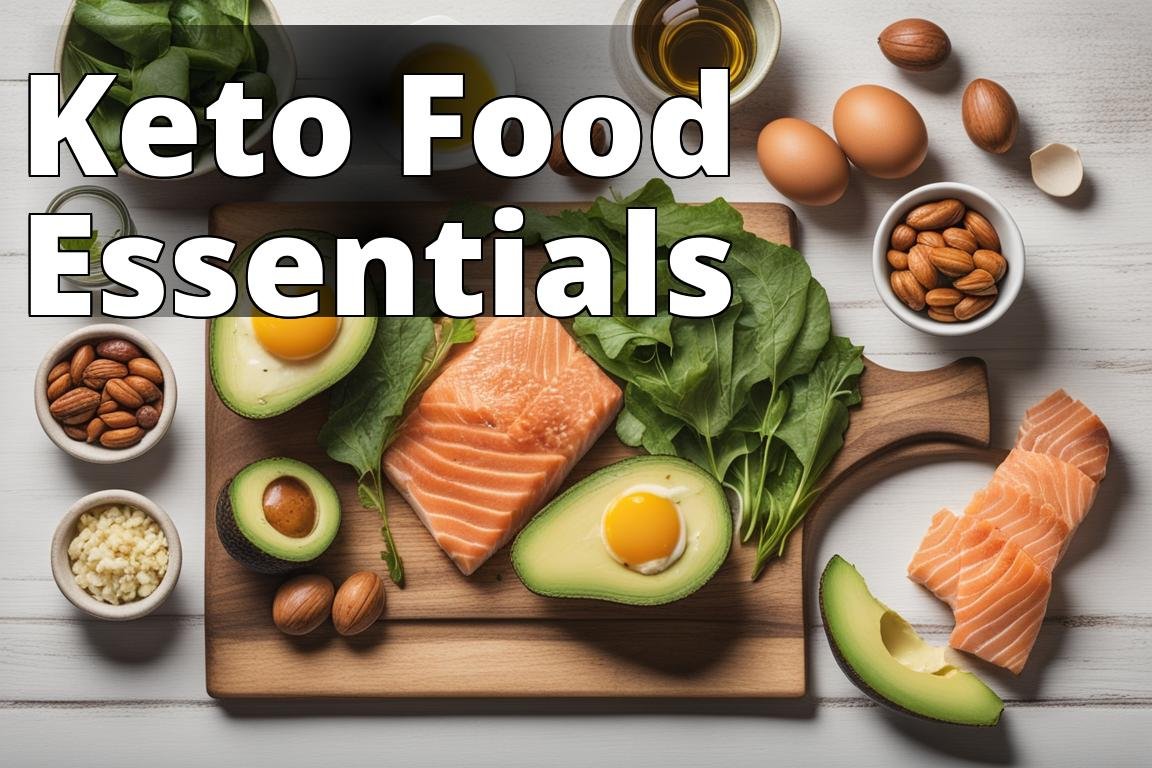Keto Diet Plan
In a world teeming with dietary regimens that promise the moon, the ketogenic diet has stood out for its remarkable ability to not just torch fat but to profoundly alter how we relate to food and energy. While its popularity surge is relatively recent, the underpinnings of the keto diet are far from a modern fad. As a personal voyager on the keto journey, I’ve navigated the highs and lows, the ketosis euphoria, and the carb withdrawal despair. This plan is more than just a meal guide; it’s a window into a lifestyle transformation.

Beginner’s Guide to Keto Diet Plan
Learn about the basics of the keto diet:
– What the keto diet is and how it works
– What to eat and what to avoid
– Get a 7-day meal plan for beginners
What is the Keto Diet?
At its core, the keto diet is simplicity cloaked in complexity. It’s the art of training your body to prefer fat as its primary energy source instead of sugar, or glucose. This metabolic state, known as ketosis, is the holy grail of the keto lifestyle. But reaching it requires a disciplined dance of macronutrients—high fats, moderate proteins, and minimal carbohydrates.
Here’s where personal anecdotes mesh with science. My initiation into keto wasn’t propelled by a quest for weight loss but a desire for mental clarity and sustained energy. The science behind ketosis—a process backed by research spanning over a century—was as compelling as the transformations I witnessed firsthand in my keto community.
GET YOUR CUSTOM KETO DIET PLAN
How Does the Keto Diet Work?
To the uninitiated, the mechanics of keto might seem counterintuitive. How could a high-fat diet possibly be good for you? The answer lies in the metabolic shift known as ketosis. When your body runs out of glucose, it turns to stored fat for fuel, producing ketones in the process. This shift doesn’t just affect weight; it impacts everything from energy levels to cognitive function.
For me, the proof was in the pudding (or in this case, the lack thereof). Transitioning to ketosis wasn’t effortless—hello, keto flu—but the benefits were palpable. My mid-afternoon energy slumps vanished, replaced by a steady stream of vitality that felt both new and deeply familiar.
What to Eat on the Keto Diet
Navigating the keto culinary landscape can be daunting at first. The pillars of a keto-friendly pantry include healthy fats like avocados and coconut oil, moderate amounts of high-quality proteins, and an abundance of leafy greens.
Here’s an insider tip: focus on whole, unprocessed foods. My kitchen transformation was as much about what I added (hello, grass-fed butter) as what I eliminated. The simplicity of keto-friendly meals—think grilled salmon with avocado salsa—belied their deep satisfaction and nutritional richness.
What to Avoid on the Keto Diet

My learning curve included reading labels religiously and acknowledging the carb content in seemingly innocuous foods. The mantra “when in doubt, leave it out” became a guiding principle, steering me clear of potential pitfalls and towards whole, nutrient-dense choices.
When following a ketogenic diet, it’s crucial to understand which foods to avoid to maintain ketosis, a metabolic state where your body burns fat for fuel instead of carbohydrates. Here’s a comprehensive list of foods to limit or avoid on the keto diet, along with reasons why they might not be suitable:
High-Carb Foods
| High-Carb Foods | Breakfast |
|---|---|
| Grains and Starchy Vegetables: | Foods like bread, pasta, rice, cereals, and starchy vegetables (e.g., potatoes, sweet potatoes) are high in carbohydrates and can disrupt ketosis. |
| High-Sugar Fruits: | Fruits such as bananas, apples, oranges, and grapes have high sugar content, which can increase your carb intake significantly. Berries can be consumed in moderation. |
| Sweetened Yogurt and Juices: | These often contain added sugars, increasing your carb intake. Opt for plain Greek yogurt and avoid juices. |
| Honey, Syrup, and Sugar: | Any form of sugar, including natural sweeteners like honey and maple syrup, is high in carbs and should be avoided. |
Processed and Unhealthy Fats
- Processed Meats: While meats are generally keto-friendly, processed meats like bacon and sausage may contain added sugars and are not the best for heart health. Choose fresh meat and poultry instead.
- Certain Oils: Not all fats are created equal on keto. It’s recommended to use healthy oils like olive oil and coconut oil, avoiding processed vegetable oils that can be high in unhealthy trans fats.
Other Considerations
- Dairy Products with Added Sugars: Some dairy products, especially those with lower fat content, can contain added sugars or naturally higher levels of carbs, like in the case of milk.
- Artificial Sweeteners and Light Products: These can slow down fat burning and may lead to cravings for more sweet foods. It’s best to avoid or limit consumption of artificially sweetened products.
- Alcohol: Many alcoholic beverages are high in carbs, which can take you out of ketosis. If you choose to drink, opt for low-carb options and consume in moderation.
Foods to Choose Instead
To replace these restricted items, focus on consuming:
- Low-Carb Vegetables: Non-starchy vegetables like leafy greens, broccoli, and zucchini are low in carbs and high in fiber.
- Healthy Fats: Avocados, nuts, seeds, and oils like olive and coconut oil are excellent sources of healthy fats suitable for the keto diet.
- Protein Sources: Eggs, meat, poultry, and fish are good protein sources that fit well into a keto diet plan.
- Low-Carb Snacks: Instead of high-carb snacks, opt for keto-friendly options like sunflower seeds, pumpkin seeds, and nuts.
By avoiding high-carb foods and unhealthy fats while focusing on nutrient-dense, low-carb options, you can successfully adhere to the ketogenic diet and potentially reap its benefits, such as weight loss and improved blood sugar control. Always remember to consult with a healthcare provider or a dietitian before starting any new diet, especially if you have underlying health conditions.
7-Day Keto Diet Meal Plan
Crafting a keto meal plan that’s both satisfying and effective requires a blend of creativity and discipline. Here’s a snapshot of a week on keto, drawn from my own experience and tailored for beginners.
| Day | Breakfast | Lunch | Dinner |
|---|---|---|---|
| Day 1 | Spinach and feta omelet with avocado | Caesar salad with grilled chicken | Zucchini noodles with pesto and walnuts |
| Day 2 | Bulletproof coffee and noatmeal | Tuna salad stuffed avocados | Cauliflower steaks with chimichurri sauce |
| Day 3 | Keto pancakes with berry compote | Broccoli and cheddar soup | Lemon-butter salmon with asparagus |
| Day 4 | Chia pudding with coconut milk | Cobb salad with hard-boiled eggs and bacon | Eggplant lasagna |
| Day 5 | Mushroom and Swiss omelet | Shrimp and avocado salad with lime dressing | Stuffed bell peppers |
| Day 6 | Almond flour waffles | Spinach and goat cheese stuffed chicken breast | Keto beef stroganoff |
| Day 7 | Coconut flour pancakes | Caesar salad with smoked salmon | Pork chops with a creamy dill sauce |
1 Keto Curry Spiked Tuna and Avocado Salad just one example of a great tasty keto receipe.
Personal Experience with the Keto Diet
Sarah’s Journey to Ketosis
Sarah, a 35-year-old marketing executive, struggled with her weight for years. After hearing about the keto diet from a friend, she decided to give it a try. Following the 7-day keto meal plan diligently, Sarah experienced significant weight loss and increased energy levels. By day 4, she noticed her clothes fitting more loosely and felt more focused at work.
Key Takeaway
Sarah’s experience highlights the effectiveness of the keto diet when followed correctly. It’s essential to stick to the meal plan and make smart food choices to achieve the desired results.
How to Get Into Ketosis Faster
The journey to ketosis is unique for everyone, but there are universal accelerators: limit your carb intake (usually below 20g net carbs daily), ramp up your physical activity, and consider intermittent fasting.
In my case, a combination of these strategies, augmented with a relentless focus on hydration and electrolyte balance, bridged the gap between effort and ketosis. Remember, patience and persistence are your allies.
How to Know If You’re in Ketosis
The signs of ketosis are both physical and measurable. On the anecdotal side, increased energy, reduced appetite, and a clearer mind were my early indicators. For those seeking quantifiable proof, keto strips, breath analyzers, and blood ketone meters offer a spectrum of accuracy and convenience.
An insider tip here is not to obsess over numbers but to focus on how you feel. Ketosis is as much a state of being as it is a metabolic condition.
The Bottom Line
The ketogenic diet is more than a meal plan; it’s a journey of discovery. It’s about understanding your body’s needs, embracing a healthier lifestyle, and enjoying the profound benefits that come from metabolic flexibility. My voyage into keto has been transformative, not just physically but in my relationship with food and wellness.
Whether you’re seeking weight loss, enhanced mental clarity, or simply a more balanced energy throughout the day, the keto diet offers a path worth considering. Remember, the journey is personal, and the best plan is the one that works for you. Embrace the journey, and let the transformation begin.
FAQs
Who can benefit from a keto diet plan for beginners?
Individuals looking to lose weight and improve their overall health.
What are the key components of a keto diet plan for beginners?
High fat, moderate protein, and very low carb intake are essential.
How can beginners start a keto diet plan effectively?
By gradually reducing carb intake, increasing healthy fats, and monitoring macros.
Isn’t it difficult to stick to a keto diet plan for beginners?
Initially, there may be challenges, but with proper guidance and meal planning, success is achievable.
What are some common mistakes to avoid on a keto diet plan?
Overeating protein, neglecting hydration, and not consuming enough healthy fats.
How long does it take to see results on a keto diet plan for beginners?
Results vary, but many beginners experience weight loss and increased energy within a few weeks.

